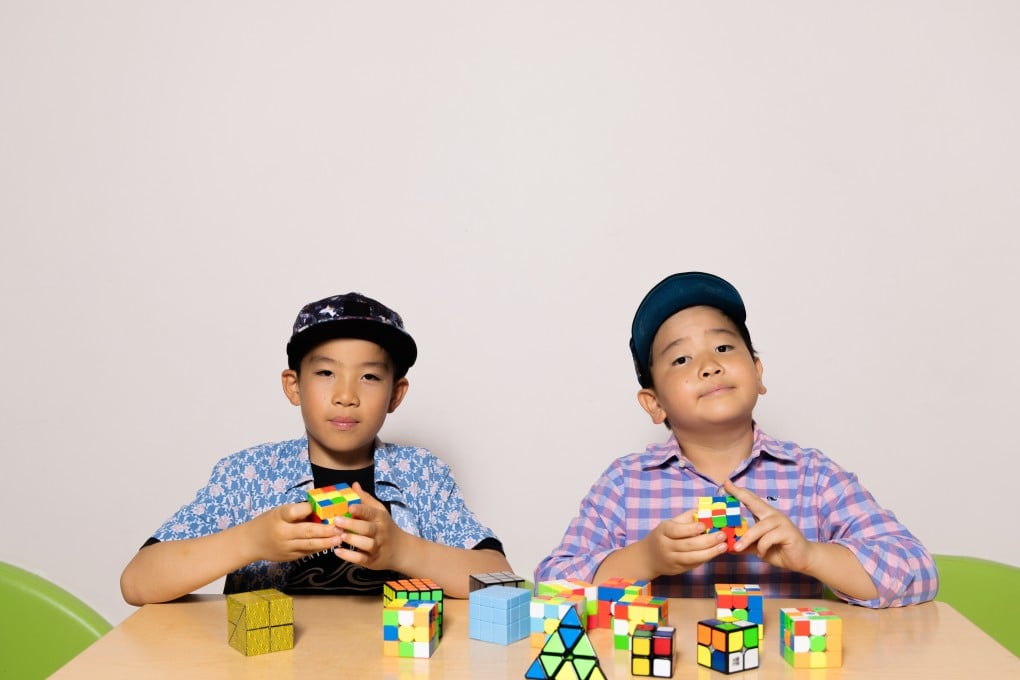Meet the growing community of Rubik’s Cube ‘speedsolvers’ in Hong Kong and beyond
It's the 50th anniversary of the Rubik’s Cube – and for Asia’s youth, the connections formed matter just as much as the speedcubing competition

How do kids get interested in anything these days? It was a YouTube video that first hooked Alexander Choi, 10, and his brother, Roman, eight, on Rubik’s Cubes last year; the clickety-clack of the cube, the flash of colours and precise turns that restored order to chaos. The Hong Kong-based siblings have been obsessed with cubing ever since seeing that first puzzle-solving tutorial, says their mother, Joy Suh Choi, a homemaker.
We connect over a video call as the family drives home after a day at the Hong Kong Country Club, both boys solving cubes in the back seat of the car. Alexander says he enjoys the challenge the cube poses and he’s constantly trying to beat his own record. He got the new GAN 15 Maglev for his birthday. “It was so exciting because this model was launched just last week,” he says.

More than 500 million cubes have been sold worldwide since Hungarian professor Erno Rubik invented the twisty-turny mechanical puzzle in 1974.
It took six years from the cube’s invention to roll it out commercially. The original version, called the “magic cube”, was rudimentary – made of wood and paper and held together with rubber bands, glue and paper clips.
Today, they are made of much lighter plastic and come with tiny magnets between the coloured panels for easy twisting. This can shave seconds off the time it takes to solve the game. For some players, in addition to the magic of the movement, the sheer variety of permutations and combinations that they can use to solve the cube is fascinating.
There are 43,252,003,274,489,856,000 ways to arrange the coloured squares, estimated mathematicians, but just one of those combinations is correct. There are four major methods and hundreds of algorithms, or a sequence of steps, that can help you arrive at that winning combination.
